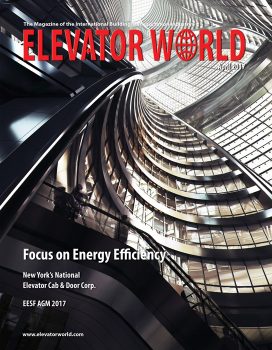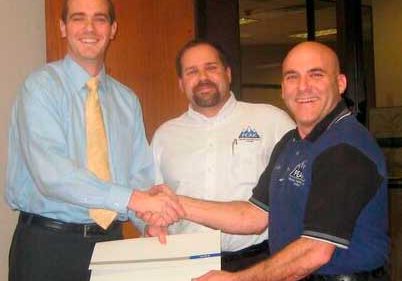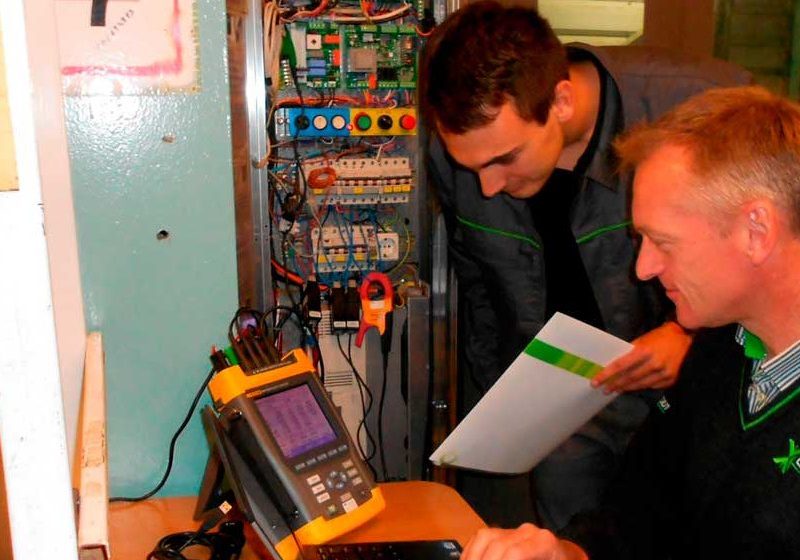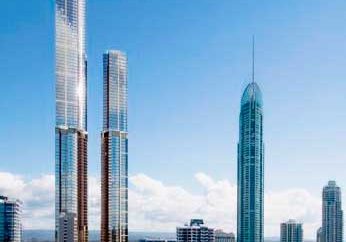Alexandra House
Apr 1, 2017

Schindler converts the conventional elevators of a prestigious commercial building to a modern elevator system.
by Tarence Wong and Alex Lee
The 37-story Alexandra House is a Grade-A office and retail building strategically located in the business hub of Hong Kong’s Central district. Completed in 1976, the 124-m-tall building is owned and managed by Hongkong Land, a listed leading property investment, management and development group with premium commercial and residential property interests in key Asian cities.
There were specific targets for the modernization at Alexandra House: to bring the building’s 40-year-old elevator systems up to the latest standards in terms of safety, ride comfort, performance, passenger experience and energy efficiency. Most importantly, the transformation was to minimize the disturbance to the tenants.
The modernization work started in April 2015. Schindler Lifts (Hong Kong) Ltd. modernized 14 elevators operating at speeds of up to 5 mps across three elevator zones and two shuttle elevators serving a single prestigious tenant. The company’s key challenge was to fit the elevators of this highly populated (more than 1,800 tenants) building with new elevator controllers, regenerative drives featuring Power Factor One (PF1) converters, the Personal Occupant Requirement Terminal (PORT) destination-dispatch system, gearless machines and new door drives. The narrow access route to the machine room meant machines had to be dismantled for transportation and later reassembled in the machine room.
Control System
To minimize disturbance to the tenants, the elevators were modernized one at a time over an average period of 12 weeks each. With four elevators serving the same zone, taking out an elevator from a zone meant a significant drop in handling capacity. An intelligent overlay system (PORT Overlay) was installed in each elevator zone before modernization commenced. This system improved the overall dispatching efficiency, thus making the overall operation unaffected. Work processes that may have affected the building’s daily operations were arranged to be done during nighttime and public holidays. Careful planning and frequent communication with the client became essential to ensure that the entire modernization process was carried out smoothly.
The modernization project improved traffic performance thanks to PORT, which not only cut waiting and destination times, but also brought numerous energy-saving and security features, and contributed to a smooth passenger experience as they interacted with its touchscreens. Schindler used its PORT Overlay technology to achieve the vision that a modernization exercise should be carried out largely unnoticed by the building tenants. As the elevators were being upgraded one at a time, the current and new elevator controllers temporarily coexisted. PORT Overlay integrated both the new and old systems under a single control during the work. Not only did the elevator group immediately start reaping most of the benefits of PORT (with the 30% shorter average destination time during morning peak hours providing sufficient capacity even with some cars being down), individual cars could be taken out for upgrading, then seamlessly added back to the group.
Schindler’s latest elevator Miconic TX controls replaced the legacy Miconic V elevator control system (upgraded in 1996), resulting in improved elevator performance, ride comfort and reliability. The change from a conventional elevator system to a destination-control one meant a change in daily habits for the building’s tenants. Meetings were held with them months before the changeover, a leaflet that showed how to use the new system was distributed, and an app for smartphones with the same purpose was deployed. The weekend before the changeover, the Schindler modernization project team conducted a series of tests to ensure the transition would be seamless.
Drives
To meet the client’s requirement for an energy-efficient system, the elevators were equipped with Schindler’s highly efficient PF1 regenerative drives, which enable energy regenerated by the elevators to be fed back to the building’s electricity grid, resulting in energy savings of approximately 35%. The regenerated energy is fully compatible with the building mains at a total harmonic distortion of less than 5%. Alexandra House had also decided to replace the motor-generator sets with gearless machines to obtain the optimum combination of efficiency and energy regeneration. Safety features complying with the latest Hong Kong standards were incorporated, including ascending car overspeed protection and unintended car movement protection devices.
Load Measuring
A newly equipped load-measuring device, the Distribution Management System, now guarantees smooth starts and stops. This device automatically recognizes the number of passengers in a car so the optimum motor speed can be applied during starts and stops. The car doors’ drive was also replaced to achieve shorter opening and closing times and improved performance with less noise.
Conclusion
This is how Schindler converted the conventional elevators of a prestigious commercial building to a modern elevator system featuring an advanced transit-management system, leading to significant energy savings, enhanced performance and riding experience, improved safety and lower maintenance downtime. The project was completed in April 2016 with minimal disturbance to the building’s tenants to the satisfaction of the customer.
Get more of Elevator World. Sign up for our free e-newsletter.






